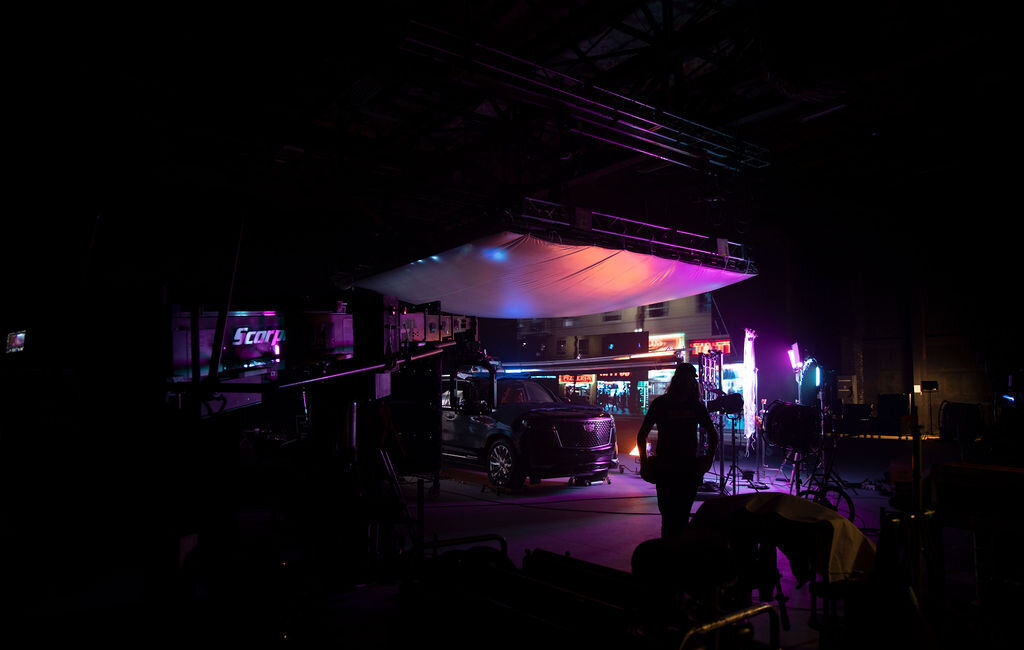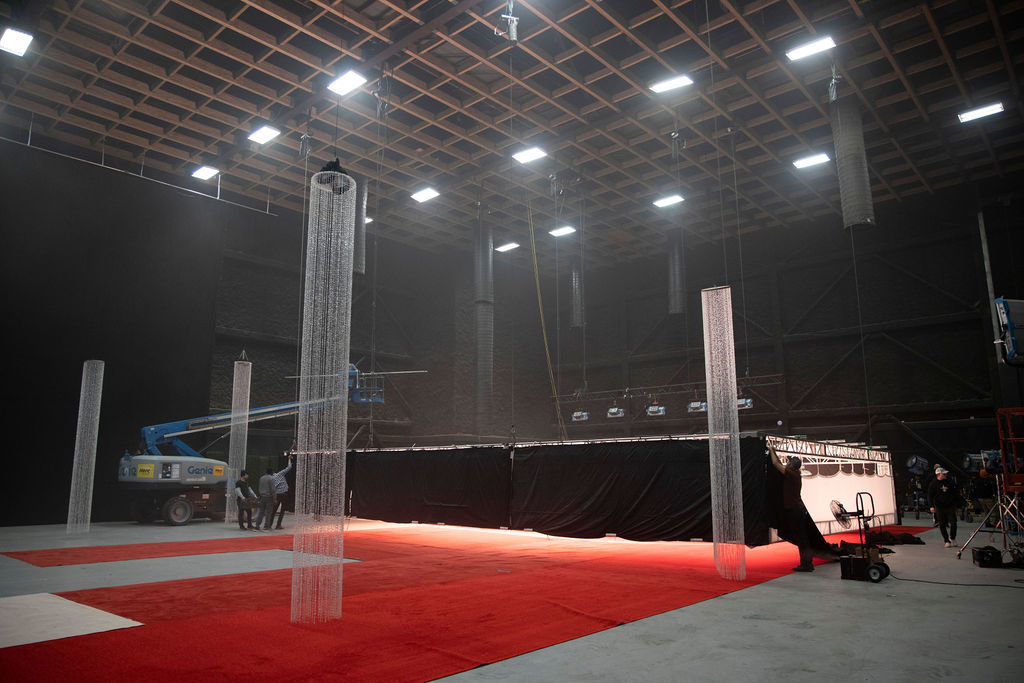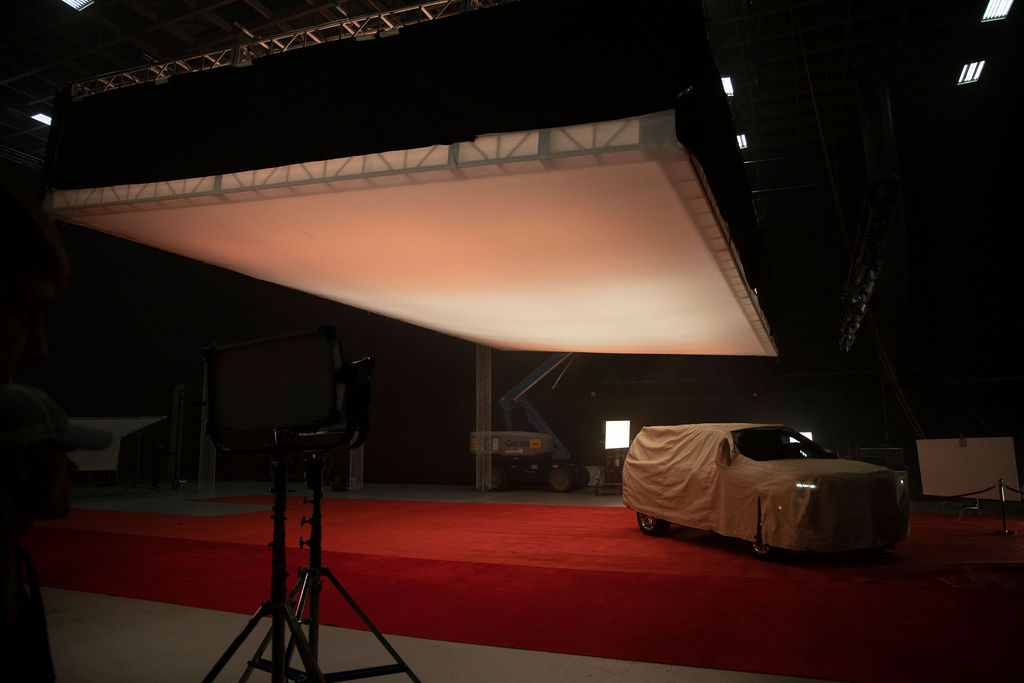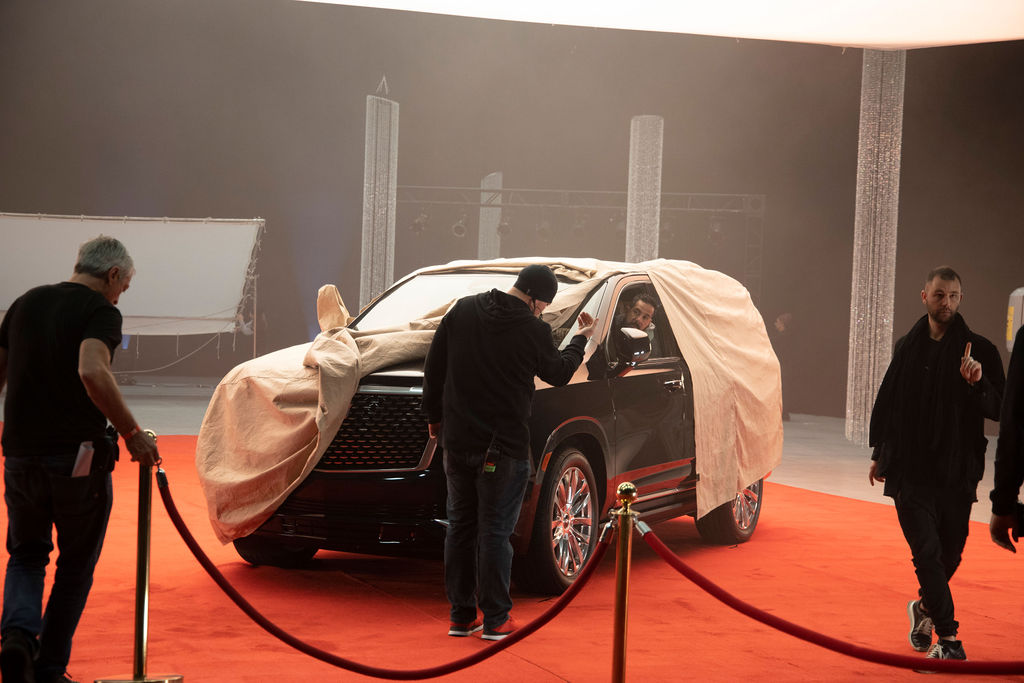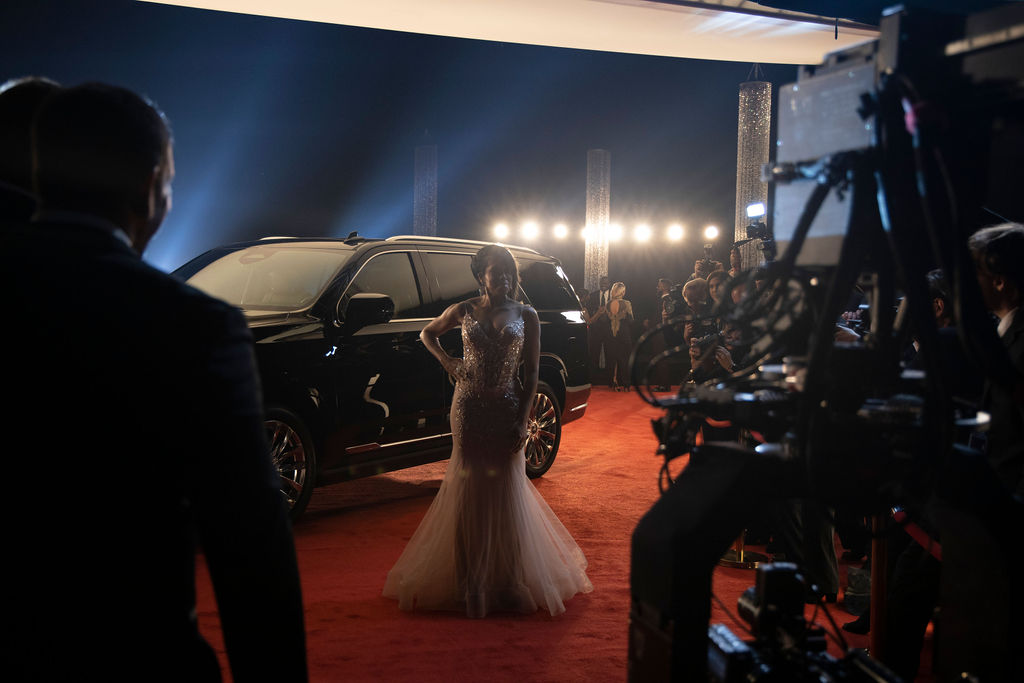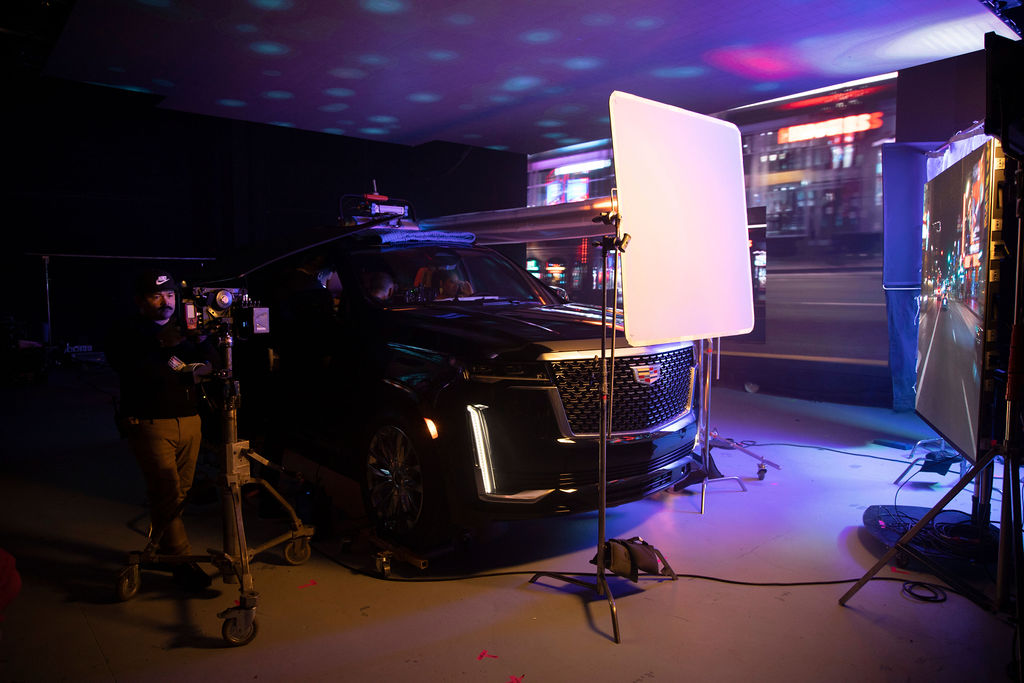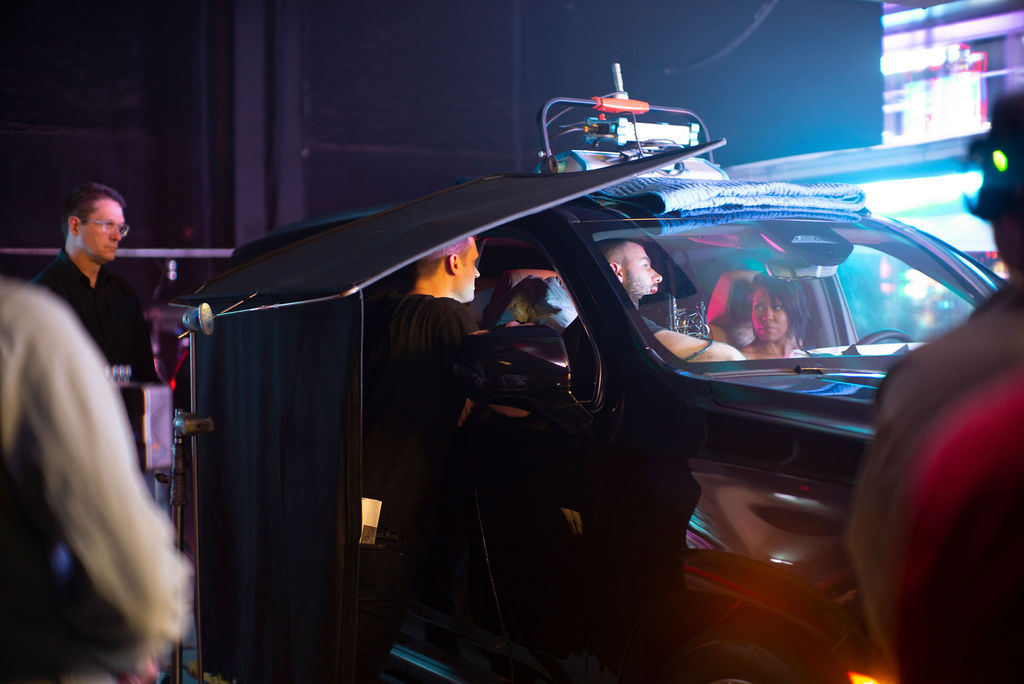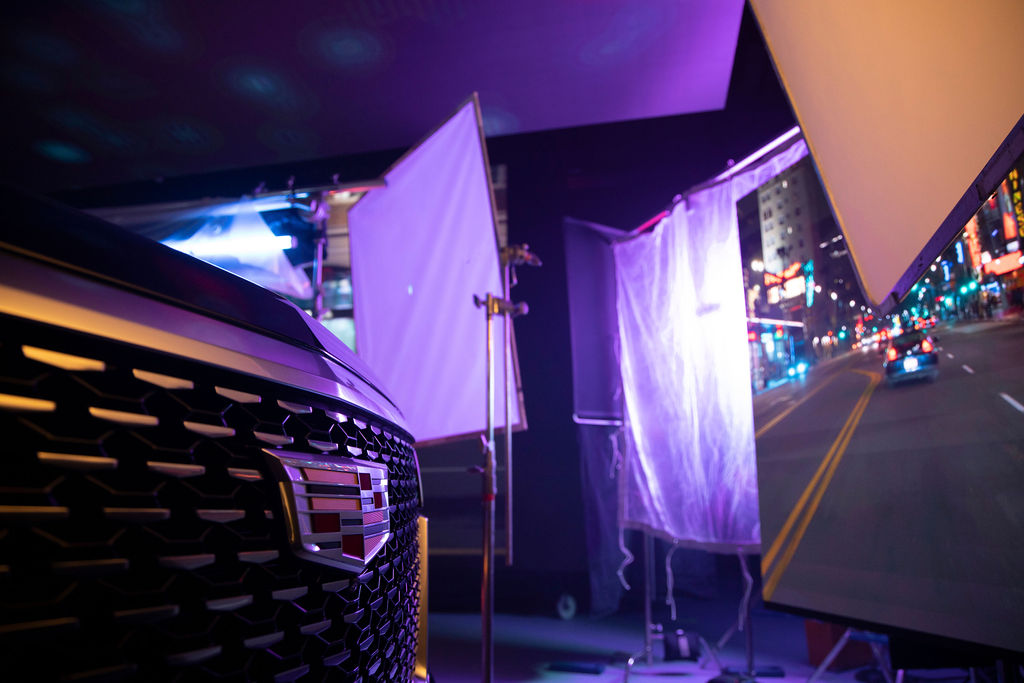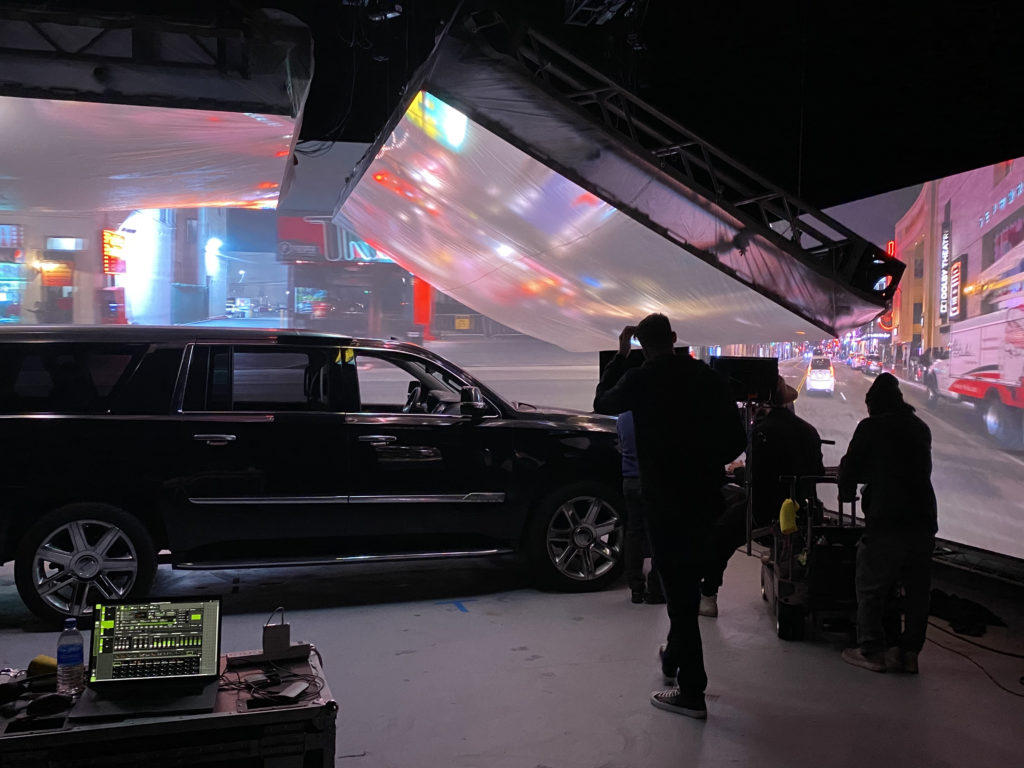We’ve talked many times about creative constraints and their value, but sometimes as filmmakers we don’t have the luxury of constraints. As they say, there’s nothing scarier than a blank page, and that’s just what Director Josh McGowan was faced with in his production of Cadillac’s Oscar spot.
When he was awarded the job, it was originally slated for an on-location shoot. But, due to some last-minute changes, the entire production was moved to a stage—and reduced to one day. Those are all constraints of their own, but Josh and his team were still facing an empty stage.
“In the real world you have something to respond to. On a stage, it’s a blank canvas and you’re creating from scratch. It can be intimidating to walk into,” he told us. “A big element for us was knowing the feeling that we wanted to create.”
Of course, this story has a happy ending. You can watch the completed Oscar’s spot below. But, we wanted to take the opportunity to pick Josh’s brain about how he tackled this challenge.
Here’s Director Josh McGowan on impressionistic painting and building Cadillac’s Oscar spot from scratch on a stage.
Musicbed: When did you learn you were moving the Cadillac production to a stage?
Josh McGowan: We knew we were going to be shooting with Regina King in New Orleans where she was doing her movie, but we thought we were going to be doing exteriors of the vehicle in LA. So, we scouted out a lot of key driving locations and we were going to match her interior driving shots to those exterior vehicle shots.
But, a couple of days before production, we got word that Cadillac was killing the on-location road shots because nobody in the world had seen this vehicle. We had marked everything down except for the airspace, and they had concerns about the vehicle being seen from the air. We basically ended up re-starting all production in New Orleans, and what was a three-day shoot became a one-day shoot on a stage.
We went from this moment of having reality to match and emulate, to just completely having to manufacture on a sound stage, which is way more difficult.
What makes it so difficult?
The process of having a stage, in general, is uninspiring to some degree. In the real world you have something to respond to. On a stage, it’s a blank canvas and you’re creating from scratch. It can be intimidating to walk into.
A big element for us was knowing the feeling that we wanted to create. For instance, the packshot of her with the vehicle at the end. A lot of those elements were about having a big scale. The Escalade is massive. It’s a massive vehicle. We had to have a stage that we could have a lot of distance behind the vehicle to let it fall away. This setting was supposed to represent the Oscars, while staying conceptual enough that it’s not trying to mimic the Oscars.
What were you looking for when you were deciding on a stage?
It was size. It was rigging. We needed a massive anchor. So, we ended up shooting on Second Line Stages in New Orleans. We needed really high ceilings because we were going to be rigging a massive amount of lights from the grid on top. So we filmed on 2 stages, one for projections and one for the red carpet.
First and foremost, we looked at ceiling height to make sure we had the option to dress above the vehicle. Then, it was about the distance around the vehicle. We needed 100 feet of space on either side of the vehicle for packshot. We were shooting anamorphic, so we needed a space that was wide enough to accommodate everything else we wanted to do in the frame.
Where do you start to build up a setting?
It really is a blank canvas. You walk in and there are these sterile white lights everywhere. You have to view it for what it can be and what you want it to be. It’s a bit of a mental shift from shooting at a real location.
But, the beauty is you can create perspective within a frame that you can’t always do on-location. Sometimes you’re limited in a real location. The big conversation point for us was how to create perspective in this room. We didn’t want it to be flat. We wanted depth and layers.
That starts with blocking for composition. It applies to color in the art and the production design. It goes to lighting in several different layers to create this dazzle and contrast and to really give Regina this moment that feels big. We wanted to give viewers a moment to know what it feels like to walk out onto that red carpet.
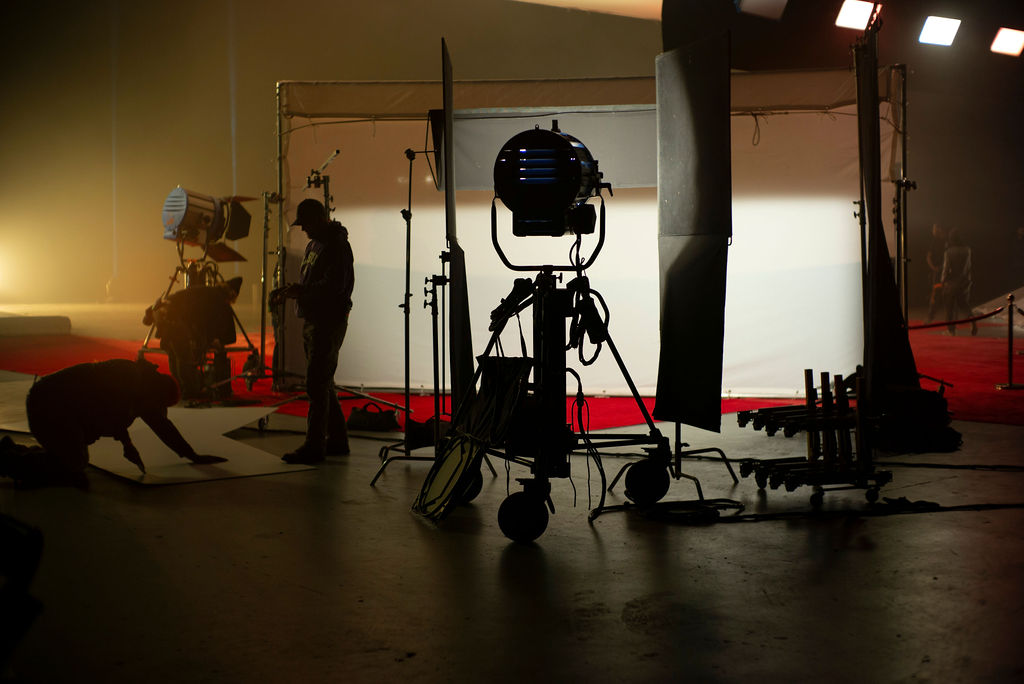
And that starts with production design?
It’s a few things. There were a lot of decisions to be made about where we put the red carpet. Are these extras behind or on the side of the vehicle? What made the most sense was to have the camera in the aisle, with people and cameras leading our eyes to her and meet her at this moment.
We used stanchions to lead everything in the frame to her and the vehicle in all its glory.
It was about creating perspective and using leading lines. Then, in the background, we didn’t want it to just be this black space. We talked about doing a composite building back there, but I felt like it would’ve come across as fake.
I sent these references to our production designer, Sherry, who was really wonderful. She found these beautiful crystal columns that you hang from the ceiling. We knew that was it. There were these repeating shapes within the frame that could create a structure in the frame.
It almost seems like an impressionist painting. The individual parts don’t represent something specific, but the whole image represents something.
I think that’s a beautiful way of looking at it. You’re creating a composition from scratch and a big part of that is this compositional triangle. It gives weight to the frame, pushes your eye where we want you to look, and then lighting enhances it all the way back.
Instead of uplighting the stanchions, our DP Matthias Koenigswieser took these really powerful, direct rays of light that just brought out the magic. On top of that I knew I wanted to use flashbulbs to create this dazzle and flares with the lenses. So, we gave all of our extras cameras to shoot with flashes, and then we used additional lights to flash the lens.
So yeah, it’s very much like you’re painting. Even with the temperature of those lights hitting the lens, at first it wasn’t having the right effect. So, we tweaked it to feel a little bit cooler and it gave the right emotional weight and impact we were looking for.
How did you work the projections into the shoot?
Once this entire project moved to a stage, we knew real projections were going to be a big part of the process. Our team—me, Matthias, and two other drivers—went out with a 360 rig on a vehicle with nine cameras.
We scouted a couple of intersections on Hollywood Boulevard and in downtown LA, on Broadway where there were these dazzling, neon lights. That was the world we wanted this production to live in. We waited until late at night when traffic was really minimal to shoot these driving plates.
Then, to use it on set, you don’t actually want to color grade the footage, which is what a lot of people instinctively want to do. You actually want to be projecting more of a log file. So, Matthias was able to light the areas we had selected so the lighting in the studio would match the intersections we were using on the stage.
Then, it’s a matter of looping the footage in the background?
We lensed up every shot of what we wanted to see, just to make sure it fit the boards that I had done. The screens were constructed on the second stage for the vehicle. I identified a 10-second loop and Matthias was lighting to that.
The hardest part was having screens that were big enough to put a lot of distance between the camera and the screen itself. We didn’t want it to look like those cheesy old driving scenes where you know it’s a projection.
We wanted to create a lot of distance between the camera and the screen, so we had to build large screens—I think one was about 20 feet tall and 40 feet wide. Then, there were six other screens on rollers that we could move around. Every time you move a camera in the setting you have to scale down the footage, rotate the screen. Every adjustment is very nuanced and it happened quickly on the fly.
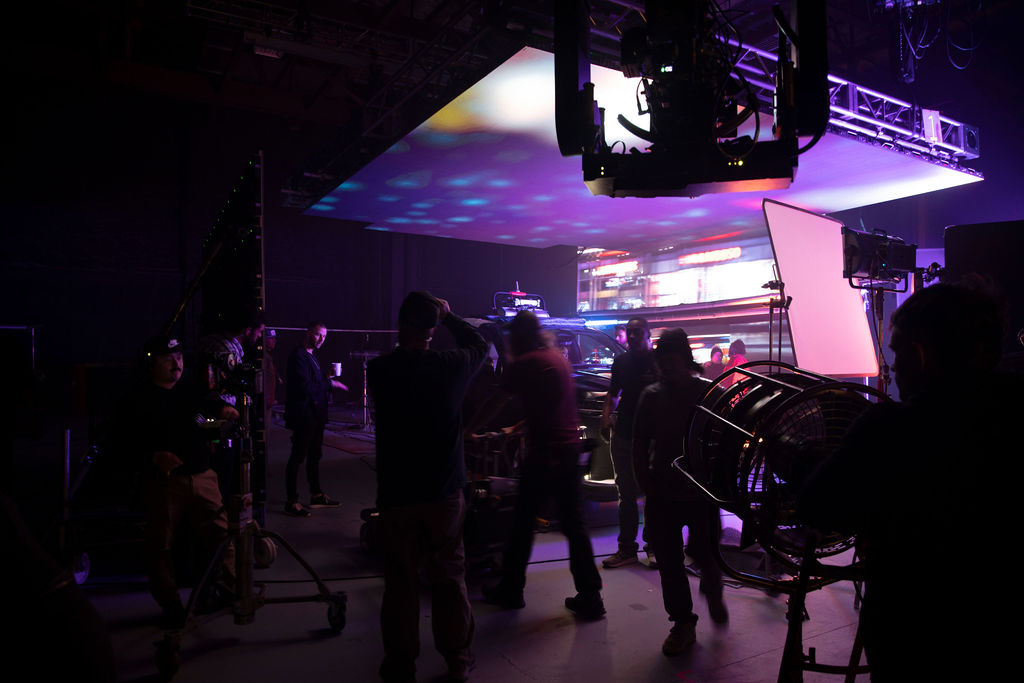
How do you think the final product turned out?
It’s funny. I just rewatched before our conversation to jog my memory. It feels like the production should be fairly straight-forward when you watch it. Just set it up, knock it out, and it’s done. But, there’s so much that went into the planning that’s almost invisible watching on screen.
That’s a good thing right? It seems like the best productions don’t seem complicated.
No, you’re right. That was the goal. You don’t want people to be distracted by the effect. You want people to question more how it was done, if they think about it at all.
As a director, how do you prepare yourself for a job that’s changing so much?
You prep as much as you can, but there’s always going to be a discovery process throughout. Everything is theoretical until you’re in front of something and can actually work on it.
Sometimes you’re halfway there but you still have to work the shot and make all adjustments to make it fit together. And sometimes you just have to be willing to throw it away and start over.
That’s the name of the game — staying open. If you have a shot you like, but the idea in front of you is actually stronger, look for the thing that feels more special than what you concocted in your brain. How do you add something that surprises you as a creative? If you’re feeling that as the director, then I think it comes out in the work too. Viewers will feel it.
One of the things I’ve learned through this project is the importance of simplicity; especially in a COVID world. I spent a lot of my career thinking bigger was better, but over the last few years I’ve been exercising restraint. Distilling everything down to the simplest form is something a stage forces you to do by its very nature. You have to get specific about every element within the frame, but this is a lesson that’s also been important for my creative process in writing a script or interpreting boards. I’ve noticed the material that resonates most for me is something that doesn’t just tell you what to think, but how to feel.
For more on directing, check out our blog post on 4 Tips for Directing a Commercial Production.















































































